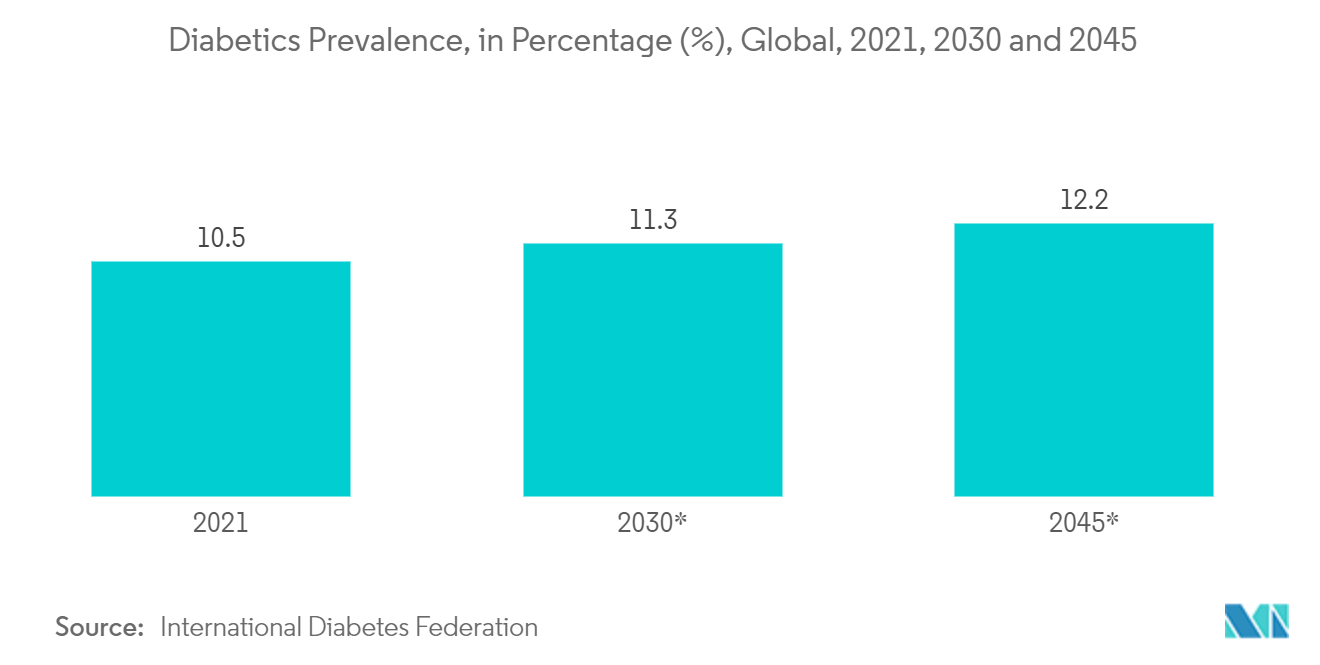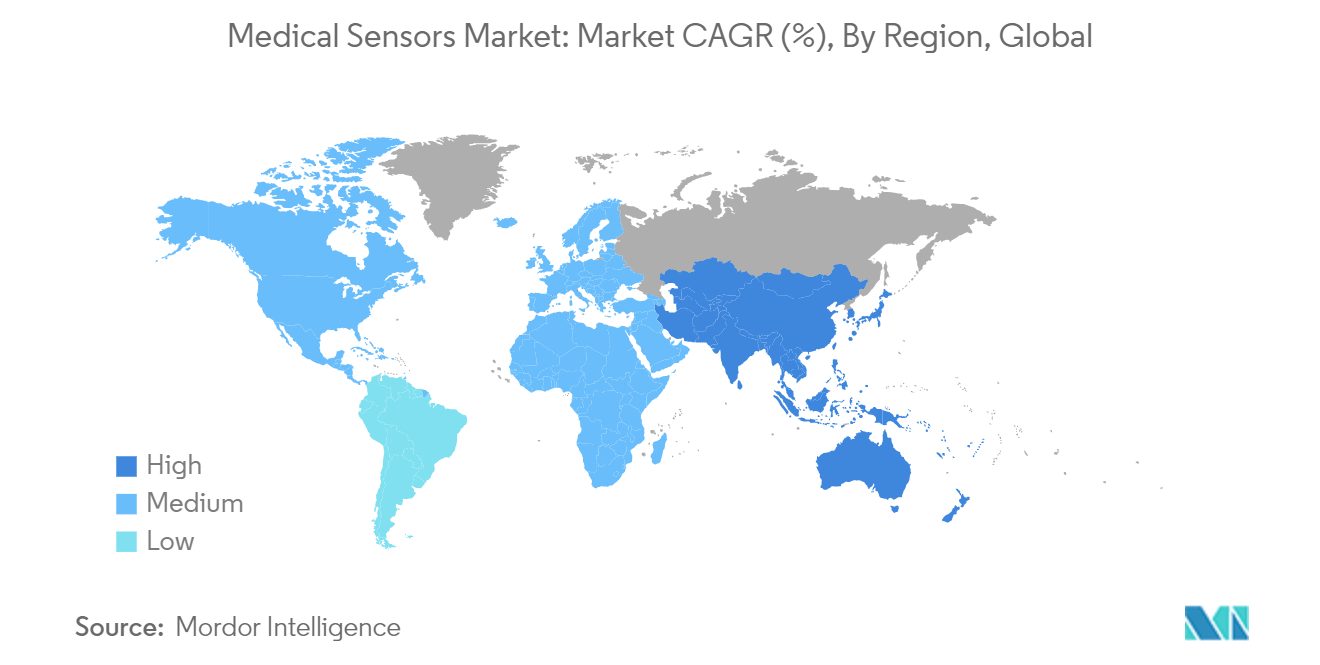Market Trends of Medical Sensor Industry
Pressure Sensors are Expected to Witness Significant Growth
- Pressure sensors are crucial components for medical devices to sustain and enhance the quality of a more effective and safe operation. Furthermore, they are the reason there has been a notable increase in portable healthcare monitoring products since they became an integral part of designing medical applications.
- Pressure sensors can monitor a patient's condition by providing definite and reliable diagnostics for various conditions. This can include monitoring oxygen therapy effectiveness in oxygen concentrators, automating drug infusion by administering the correct volume and rate of fluid in infusion pumps, or even measuring blood pressure.
- Moreover, many people suffer from asthma attacks and use inhalers as a solution. Poor inhaler techniques prevent patients from receiving their full therapeutic benefits. In order to counter this situation, leading medical equipment manufacturers are employing pressure sensors in inhalers, and individuals are starting to receive proper asthma care measures.
- The increasing cases of respiratory diseases such as chronic obstructive pulmonary disorder (COPD) and asthma are creating a high demand for pressure sensors, further supporting market growth. Wearable pressure sensors are widely used in medicine to track important signs and in robotics to help mechanical fingers manipulate delicate objects. However, traditional soft capacitive pressure sensors only work at pressures below 3 kPa, so even simple clothing, such as close-fitting clothing, can affect performance.
- The increasing prevalence of diabetes drives the demand for pressure sensors in various medical devices and systems used for diabetes management, monitoring, and treatment. Pressure sensors play a vital role in ensuring these devices' accuracy, reliability, and effectiveness, contributing to improved outcomes and quality of life for individuals with diabetes.
- According to the International Diabetes Federation, around 10.5% of the global adult population suffered from diabetes in 2021; by the year 2045, this is expected to rise to over 12%. Diabetes, or diabetes mellitus, is a group of metabolic disorders resulting in chronic high blood sugar levels.
- Additionally, home medical wearables, fitness trackers, and health monitors have significantly increased the demand for pressure sensors. This is due to the increasing focus on data-centric systems. These systems require increased functionality and reduced power consumption. This trend is driven by the development of intelligent systems that closely monitor people and the environment and proactively provide warnings, actions, or suggestions for action.

North America Holds the Largest Market Share
- The medical device market in North America is one of the largest among all the regions and is expected to grow considerably during the forecast period. Factors such as a well-developed healthcare infrastructure, the presence of adequate and favorable reimbursement policies, rapid adoption of advanced medical technologies, and major players within the region are responsible for market growth.
- The growing number of patients undergoing diagnosis and treatment in the regions due to a rising incidence and prevalence of chronic conditions has promoted the acceptance of advanced medical devices and associated sensors in the past few years.
- As of January 2022, there were around 18.1 million cancer survivors in the United States, according to the National Cancer Institute. This represented about 5.4% of the population. The number of cancer survivors is estimated to increase by 24.4% to 22.5 million by 2032. Cancer is the second leading cause of death in the United States, followed by heart disease. The rising number of cancer patients increases the demand for medical imaging devices, thus driving market growth.
- Furthermore, the growing demand for home healthcare devices and increased investments in medical device research and development will support market growth as sensors are integral parts of medical devices.
- Medical devices rely on several industries in which the United States has competitive advantages, including instrumentation, telecommunications, biotechnology, microelectronics, and software development. Collaborations have led to recent advances in neurostimulators, stent technology, biomarkers, robotic assistance, and implantable electronics.
- Many federal policies, programs, and actions have been initiated by governments in the region to achieve progress in health services. For example, within the United States, the federal government has been encouraging the use of healthcare data through various policies and initiatives. Affordable Care Act (ACA), the most important healthcare legislation in the United States, authorized the Department of Health and Human Services to release data that promotes transparency in healthcare and medical insurance markets.
- In October 2023, Mindray announced new integrations as part of a collaboration agreement with Edwards Lifesciences, a provider of medical innovations for critical care monitoring and structural heart disease. The new solution integrates Mindray's BeneVision N-series patient monitoring system and Edwards' FloTrac sensor to enable hemodynamic monitoring.


